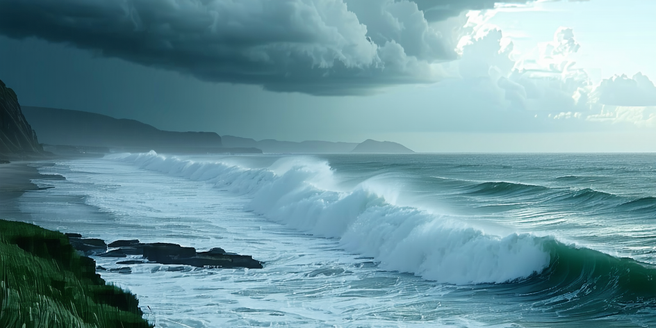
Understanding Cold Fronts and Their Formation
Cold fronts are transitional zones where a colder air mass replaces a warmer air mass. They usually move from northwest to southeast and are characterized by a distinct drop in temperature, shifts in wind direction, and often inclement weather conditions such as rain or thunderstorms. As the denser, cold air wedges beneath the lighter, warm air, it forces the warm air to rise, leading to the development of clouds and precipitation. Understanding the dynamics of cold fronts is crucial in meteorology since their arrival can significantly impact weather patterns. By studying the formation and movement of cold fronts, meteorologists can better predict weather changes and help communities prepare for potential hazards posed by these impactful weather events.
The Role of Cold Fronts in Shaping Coastal Landscapes
Cold fronts play a significant role in shaping coastal landscapes through a combination of strong winds and high waves. As these fronts move in, the associated wind patterns can generate substantial wave action, which directly impacts coastal erosion processes. This interplay between atmospheric conditions and ocean currents can lead to rapid changes in the coastal topography. Over time, the persistent forces of wind and waves reshape coastlines, leading to the formation of new landforms such as sandbars, dunes, and estuaries. Understanding this role is essential for coastal management efforts, as it highlights the need for proactive measures to mitigate erosion. By recognizing the interaction between cold fronts and coastal landscapes, environmental planners can devise strategies to protect vulnerable coastal areas and ensure the sustainability of these dynamic environments.
Mechanisms of Erosion During Cold Front Events
During cold front events, erosion is driven by a combination of atmospheric and oceanic forces. As the cold front passes, its associated strong winds and steep pressure gradients increase wave energy and elevate sea levels, promoting intense coastal erosion. This can be especially problematic for low-lying coastal areas that are already vulnerable to sea-level rise. The mechanical action of turbulent waves against the shoreline removes sediment and can lead to significant land loss. In addition to wave action, rainfall associated with cold fronts can lead to increased surface runoff, further escalating soil erosion inland. These mechanisms contribute to the reshaping of landscapes, highlighting the need for effective monitoring and management of erosion-prone areas during such meteorological events.
Innovative Techniques for Erosion Control in Cold Front Zones
To combat the challenges posed by erosion in cold front zones, several innovative techniques have been developed. Living shorelines, which use natural vegetation and biodegradable materials, provide a sustainable erosion barrier while enhancing habitat value. Breakwaters and artificial reefs are also employed to reduce wave energy and protect shorelines. In addition, geotextiles and erosion control mats offer highly adaptable solutions that help stabilize soil and prevent sediment loss. Research teams are actively testing the effectiveness of integrating multiple erosion control methods in various environments. Continued exploration of advanced materials and strategic placement of these techniques is vital for mitigating the effects of erosion. These efforts aim to balance ecological integrity with human infrastructure needs, promoting resilient coastal communities.
Case Studies: Cold Front Impact on Erosion Practices
Several case studies highlight the drastic impact cold fronts can have on erosion practices. For instance, the Gulf Coast regularly experiences severe erosional events due to the passage of cold fronts, which bring about intense winds and high-energy waves. As a result, communities have become more proactive in seeking long-term solutions to mitigate these effects. These conditions have led to innovative coastal defense strategies, including the implementation of oyster reefs in Alabama, which serve to buffer wave action and promote sediment accretion. In another example, the use of reinforced dunes in Texas has proven successful in reducing the landward intrusion of storm surges. These cases underscore the necessity of adaptive and location-specific erosion management practices to address the diverse challenges presented by cold fronts.
